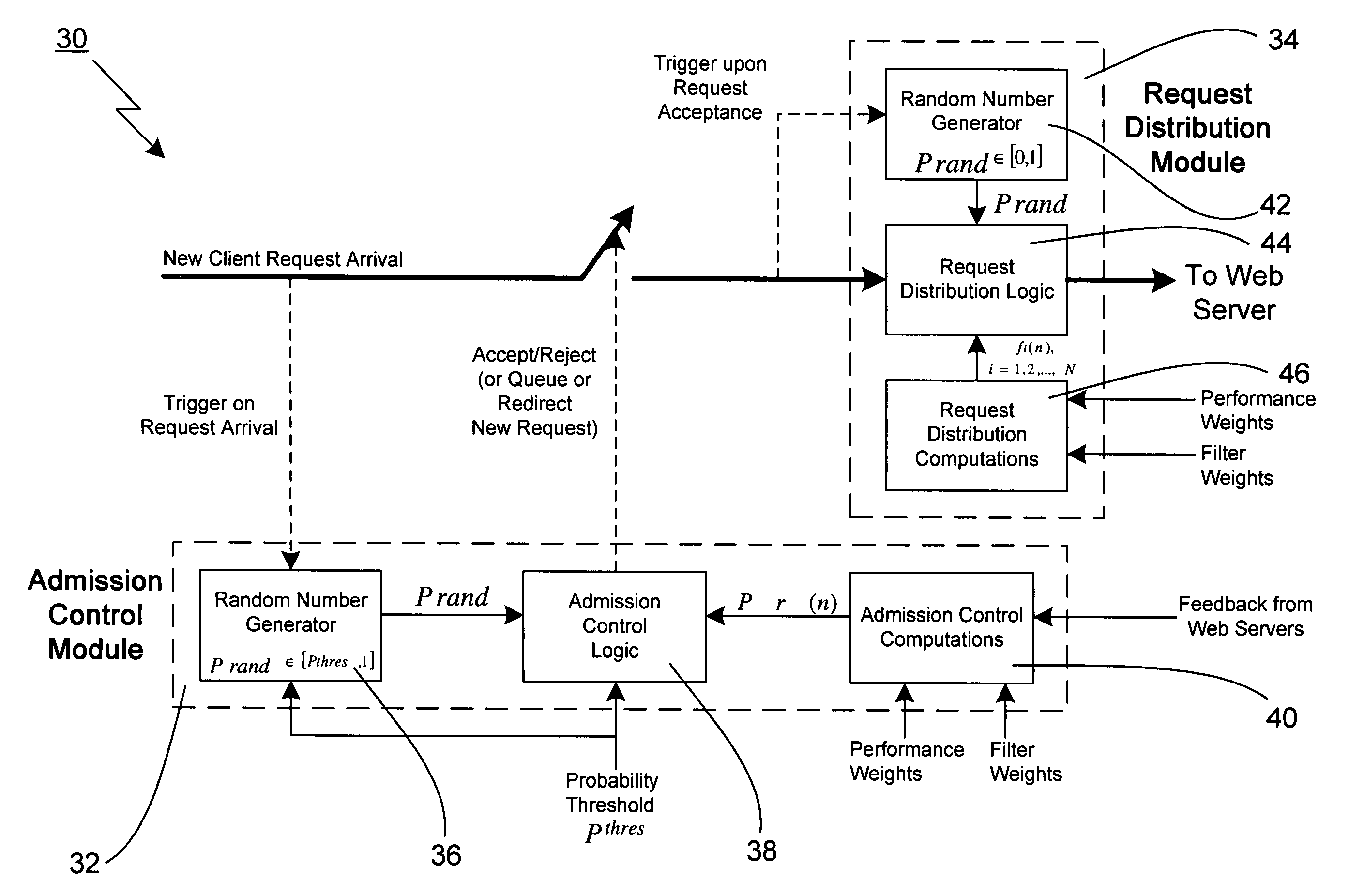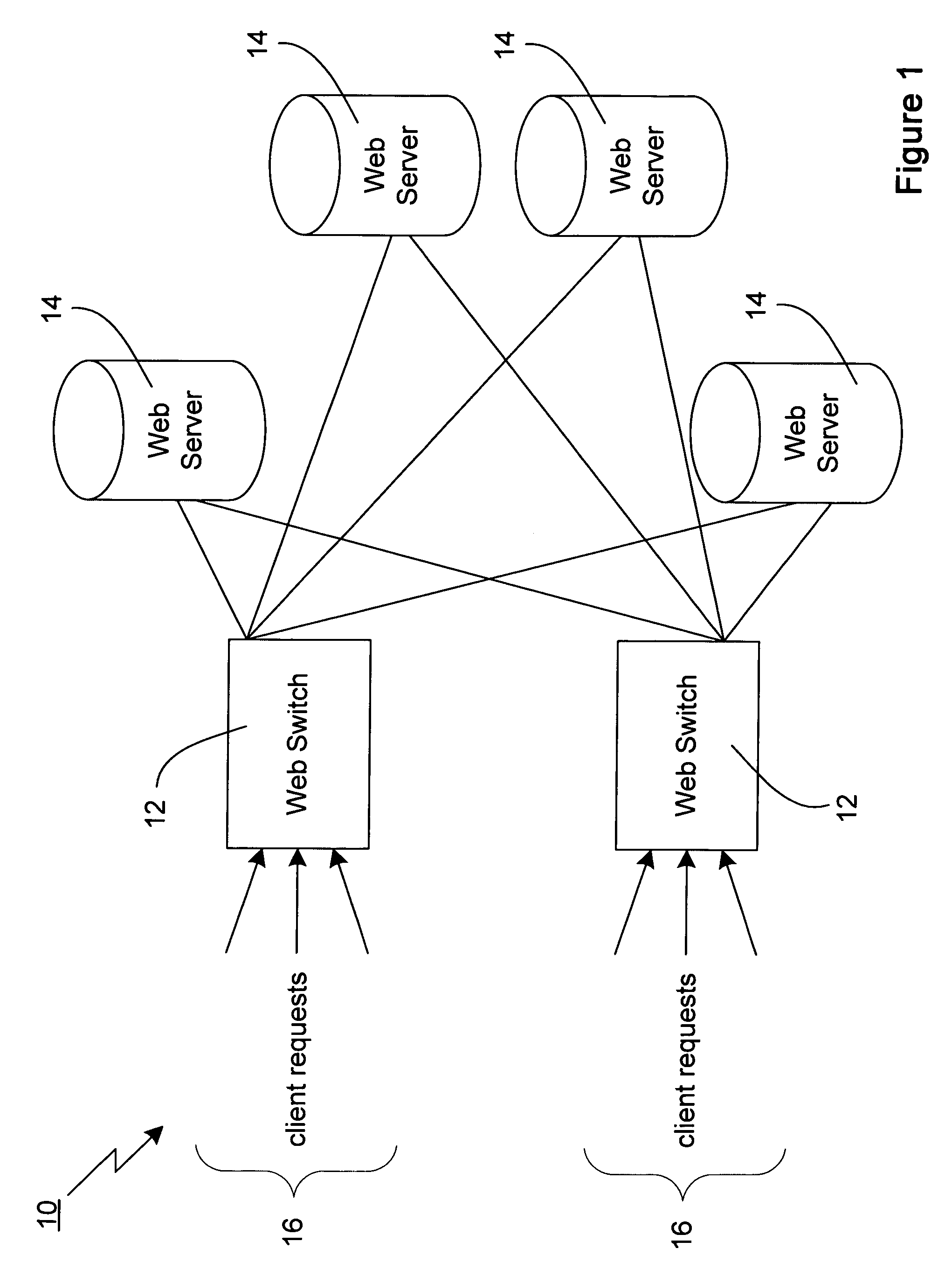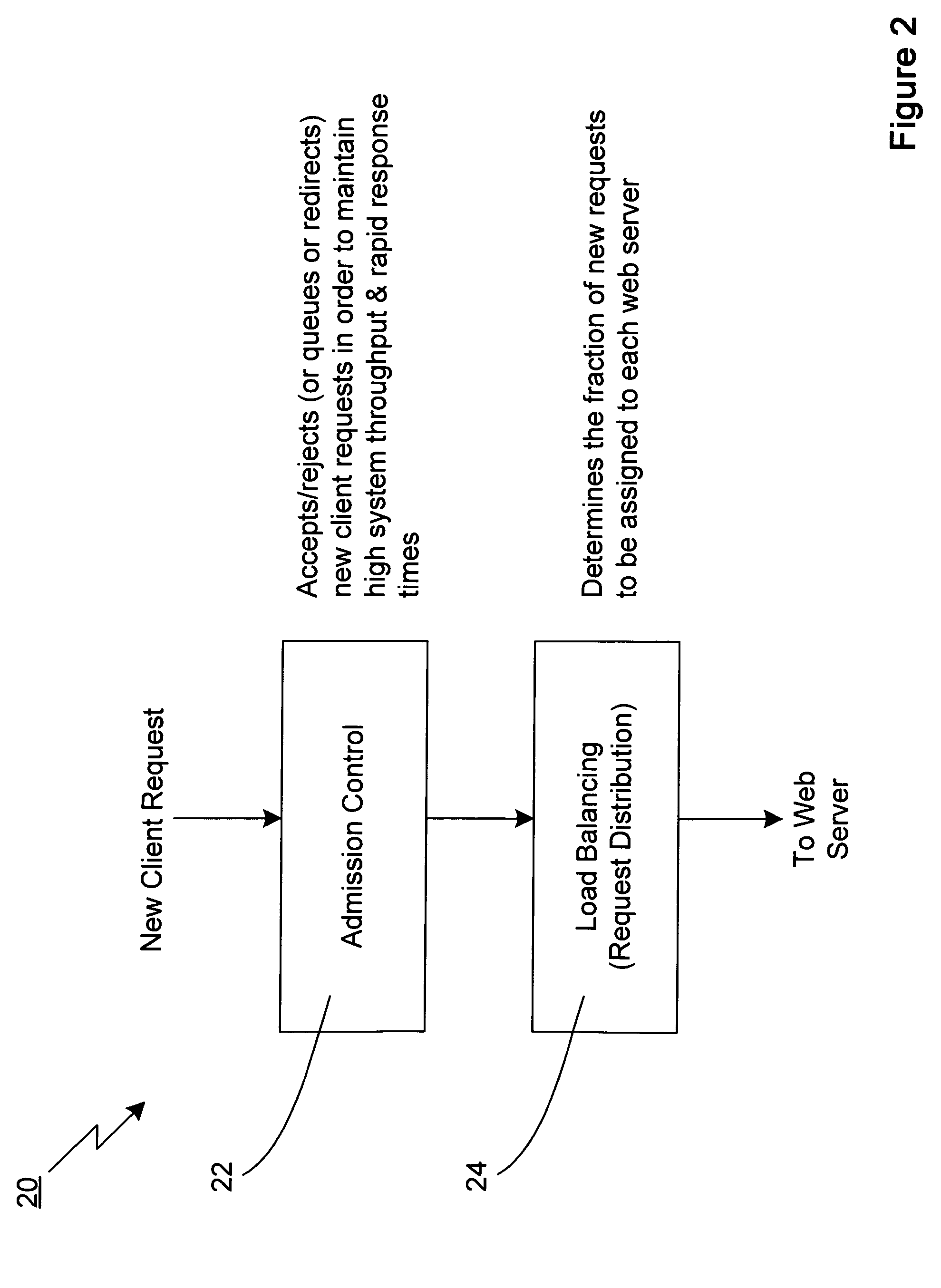Technique for adaptively distributing web server requests
a web server and request technology, applied in the field of load balancing in web server systems, can solve the problems of increasing the complexity of content management, network and application management, difficult management, and the cost of service interruptions in today's web applications
- Summary
- Abstract
- Description
- Claims
- Application Information
AI Technical Summary
Benefits of technology
Problems solved by technology
Method used
Image
Examples
Embodiment Construction
)
[0022]Referring to FIG. 1, there is shown a web server system 10 for supporting a new client request admission control and distribution scheme in accordance with the present invention. The web server system 10 comprises a plurality of web switches 12 and a plurality of web servers 14. The web switches 12 interface with a network (not shown) and receive client requests 16 destined for the web servers 14. The web servers 14 may differ in their internal configuration and processing power.
[0023]The incoming client requests 16 are examined by the web switches 12 to determine whether they relate to an existing “session” between a client (not shown) and the web server 14. A session is said to exist between the client and the web server 14 if the client has recently interacted with the web server 14 (sessions can be aged out using timeouts).
[0024]If a client request 16 belongs to an existing session, it is immediately forwarded to the web server 14 handling that session. Otherwise, the cli...
PUM
 Login to View More
Login to View More Abstract
Description
Claims
Application Information
 Login to View More
Login to View More - R&D
- Intellectual Property
- Life Sciences
- Materials
- Tech Scout
- Unparalleled Data Quality
- Higher Quality Content
- 60% Fewer Hallucinations
Browse by: Latest US Patents, China's latest patents, Technical Efficacy Thesaurus, Application Domain, Technology Topic, Popular Technical Reports.
© 2025 PatSnap. All rights reserved.Legal|Privacy policy|Modern Slavery Act Transparency Statement|Sitemap|About US| Contact US: help@patsnap.com



